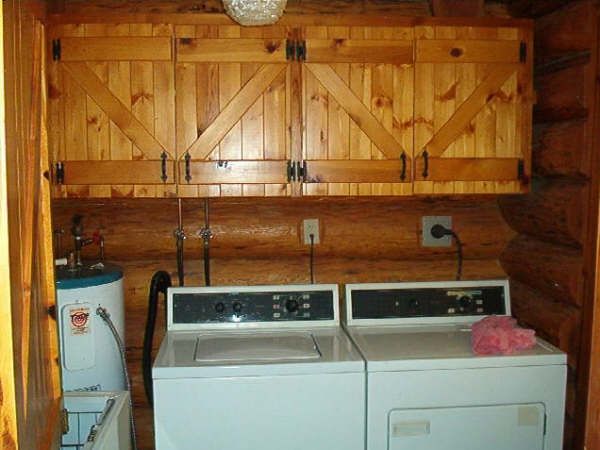Facing frameless melamine cabinets
Facing and finishing melamine carcasses to attain a high-end, traditional look without face frames. April 2, 2002
Question
Suppose the architect has designed a kitchen with face frameless cabinets. She wants the kitchen to have a high-end look by using real wood frame-and-panel doors and drawer fronts. But also she wants to save money by using melamine carcasses. How do you "face" the cabinets? Real wood edge tape? If so, what a pain for finishing!
Forum Responses
Quite often you can get an edge tape to match the grain and colour of your doors in PVC or polyester. If it's an odd colour, you're stuck with finishing by hand. Wipe the stain on carefully one at a time, but you can spray on the lacquer by stacking them with the edges even. Don't stack and stain or the stain may creep up between the panels.
We make melamine cabinets with real wood edgebanding all the time. We machine the parts to the point of just prior to assembly, ease edges, stack them up and stain, then finish the edges. Any stain that creeps between the panels wipes off easily with lacquer thinner on a rag. Sometimes we also finish the finished ends, etc. before assembly and putty pin nail holes with matching putty.
If using unfinished plywood for case interiors, the stain creep will be a problem, but with melamine or prefinished plywood, there has never been a problem for us. This method saves a bunch of time over assembling the cabs and then masking each box.
I do the same as described above. It's a lot easier than finishing face frames.
There is also the option of prefinished real wood veneer in many colors and species.
Get a roll of veneer edge tape and cut it into as many lengths as you need. Attach them to scrap lengths of plywood with tape, stain and spray them and put them on with an edgebander or whatever. We do this all the time for cabinets made out of prefinished plywood.
All these are good ideas, but you can also simply mould out the units with machined hardwood, including details of fluting, chamfer, beveling and a host of other design ideas. This will require attention to the spacing of boxes (achieved with spacing blocks or strips mounted between boxes) but will allow for an enormous variety of design style capability. There is no end to the ingenuity that can be applied.
